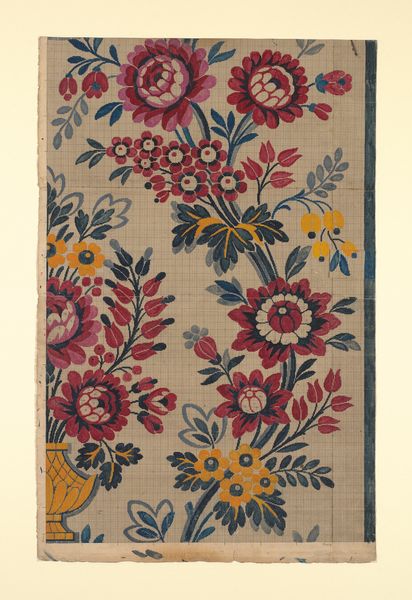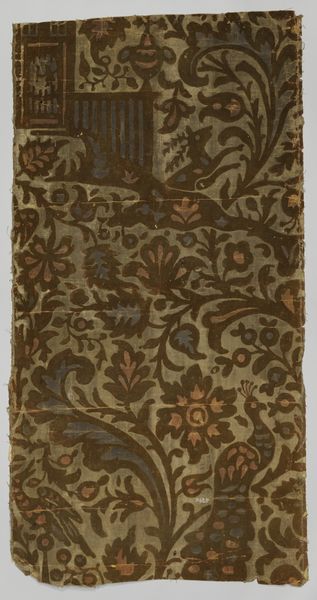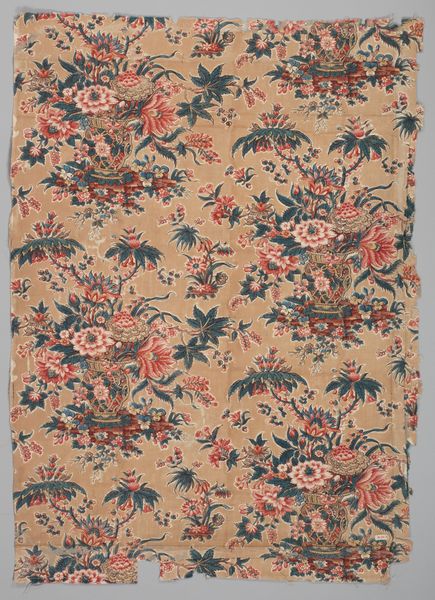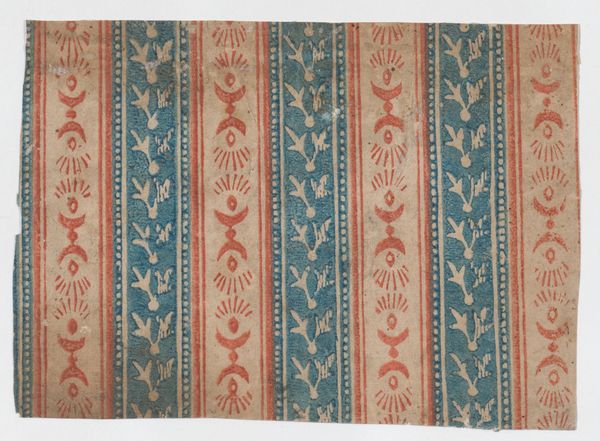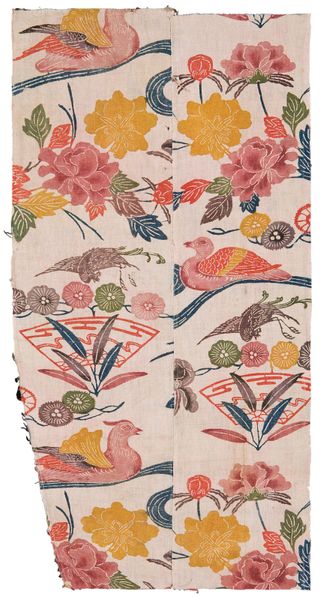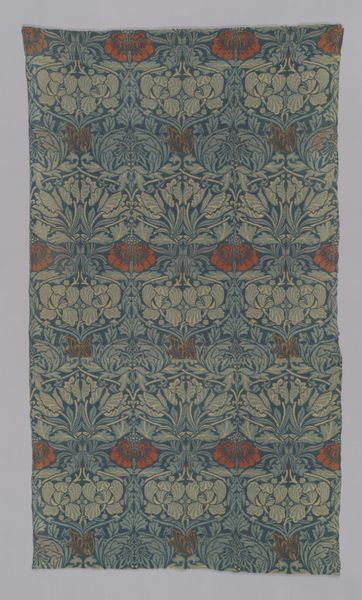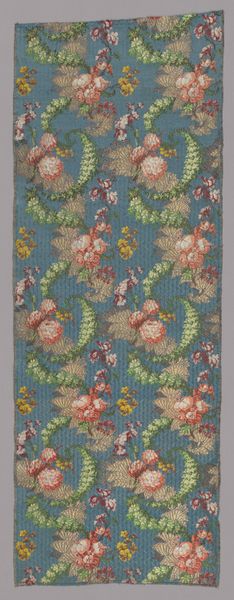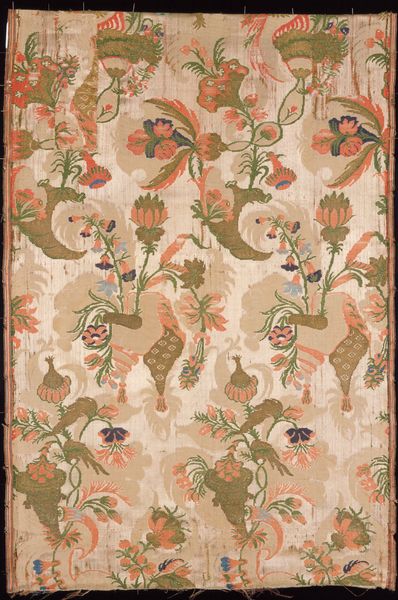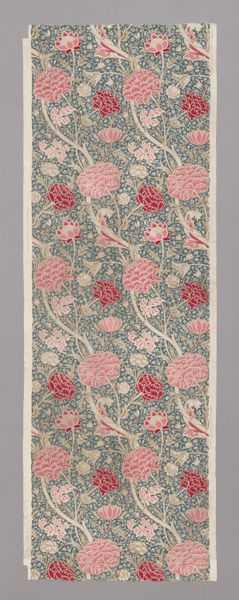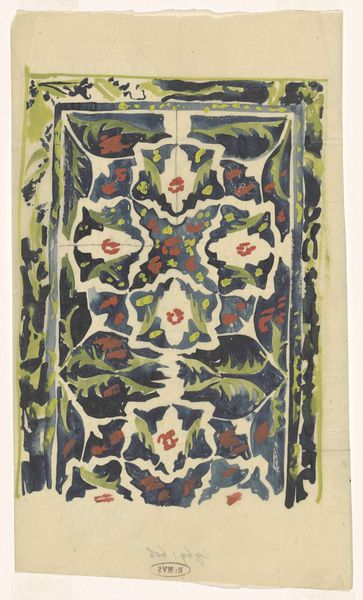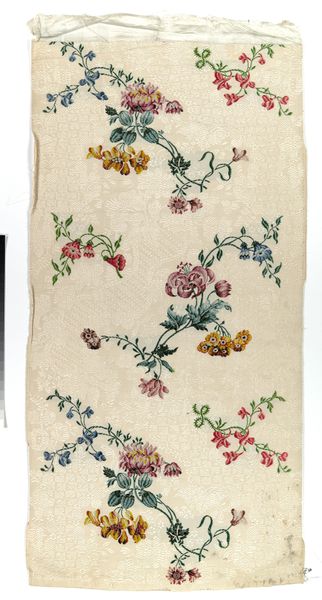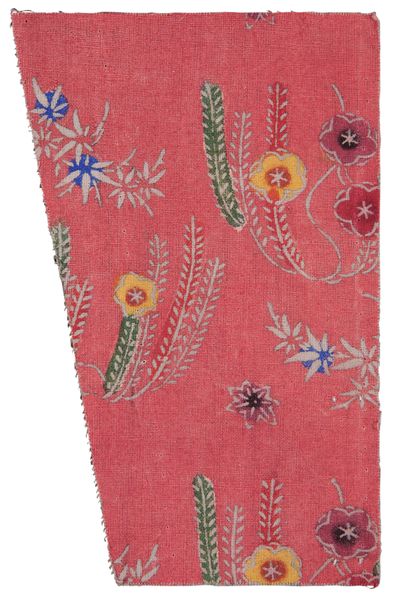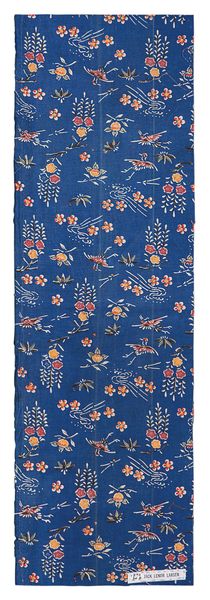
weaving, textile
#
pattern heavy
#
naturalistic pattern
#
asian-art
#
weaving
#
textile
#
japan
#
pattern background
#
abstract pattern
#
organic pattern
#
repetition of pattern
#
pattern repetition
#
textile design
#
layered pattern
#
funky pattern
Copyright: Public Domain
Editor: This is a 19th-century wrapping cloth with pine designs. It’s called “uchikui,” and it’s currently housed at the Minneapolis Institute of Art. The overall impression is a deeply patterned surface. What stories do you think this cloth might hold? Curator: Well, uchikui, these wrapping cloths, weren't just decorative. They were deeply embedded in social practices. This one, with its pine motif, likely signaled something specific about the giver or the occasion. The pine, often associated with longevity and steadfastness, points toward particular societal values. What about its patterns? What stands out? Editor: I noticed the repetition of the design, and the sort of abstracted renderings of pine needles and branches. Does that have anything to do with functionality? Curator: Absolutely. Think about the labour involved in creating such a densely patterned textile by hand. These textiles would have represented not just functional objects but also demonstrated the economic stability and social standing of those who commissioned and owned them. In terms of functionality, consider how the wrapping itself becomes part of a complex dialogue, wrapping not only gifts, but ideas about social status and cultural memory. This layering makes you think, doesn't it? Editor: Definitely. So the wrapping cloth, through its design and use, acted as a messenger within a specific social context? Curator: Precisely. It underscores how textiles are often overlooked as active participants in shaping cultural meanings and social relations. Each motif carries embedded messages, contributing to a richer, multi-layered discourse. The role of women, perhaps involved in the production, could offer further insight into production conditions too, raising more nuanced points for consideration. Editor: I never considered how much these everyday items could communicate. Now I see so many more layers! Curator: Exactly! By viewing this wrapping cloth through an intersectional lens, we reveal narratives about Japanese society, labour, and gender roles of the 19th century that a purely aesthetic assessment might miss.
Comments
No comments
Be the first to comment and join the conversation on the ultimate creative platform.
